- Home
- Fishing Line
- Leader Wire
Leader Wire Alternatives Compared
When making up a wire leader, your choice of leader wire type is worth careful thought. After all, wire leaders of any kind are something of a necessary evil as, compared to mono leaders, they're more visible to fish and more awkward to connect to other components of your gear.
But fish equipped with a set of sharp teeth will make short work of nylon leaders, so wire is required for these critters - but which type of leader wire is the best one to use? Read on...
Wire leaders are made up from either ...
- single-strand wire, or
- multi-strand wire
Generally speaking, single-strand wire will have the greatest resistance to being bitten through and will be of smaller diameter (and therefore less visible) than multi-strand wire of an equivalent breaking strain.
But single-strand wire is prone to kinking, which can lead to general disappointment all round.
On the other hand, multi-strand wire (cable) is more flexible and much less prone to kinking - but it is thicker and consequently more visible than single-strand leader wire of equivalent breaking strain.
So here they all are, and for a summary of the pros and cons of each leader type take a look at the table at the foot of the page.
Single-Strand Wire
There are four types of single-strand wire leaders:~
1 - Piano Wire
One of the earliest types of leader wire, this tinned or galvanised carbon steel material is not used much these days, mainly because of its poor corrosion resistance.
2 - Stainless Wire
An improvement over piano wire, both in terms of flexibility and resistance to corrosion, and it's inexpensive.
Make connections to hooks lures and swivels with a Haywire Twist and to nylon monofilament mainline with an Albright Knot.
3 - Monel Wire
This nickel-copper alloy provides maximum corrosion resistance in saltwater and is more flexible than stainless wire, which makes it ideal for wire trolling lines, as well as leaders.
Make connections to hooks lures and swivels with a Haywire Twist and to nylon monofilament mainline with an Albright Knot.
4 - Titanium Wire
The most flexible, kink resistant and corrosion proof of all single-strand wire leaders - but it's a bit pricey!
Titanium wire's stretch and flexibility enables it to be knotted at connections, rather than twisted.
Make connections to hooks lures and swivels with a simple clinch knot and to nylon monofilament mainline with an Albright Knot.
Multi-Strand Wire
There are two methods of forming multi-strand wire leaders, both of which are made up in stainless-steel wire strands:~
1 - Nylon-Coated Multi-Strand Wire
This is inexpensive, pliable and pleasant to use and is made up of 7 strands of wire twisted together. However, any nick in the nylon coating will lead to corrosion in the wire.
The haywire twist connection won't work in nylon-coated wire - make all connections with Crimps.
2 - Plain Multi-Strand Cable
This is the most bite-proof of all wire leaders, but it's also the most visible.
It's constructed by twisting 7 of the 7 strand wires around each other, and hence is known as either 7x7, or 49 strand cable.
Make all connections with Crimps.
Properties of Leader Wire Types
| Line | Strengths | Weaknesses |
|---|---|---|
| Single-strand piano or music wire | Inexpensive, resistant to sharp teeth, smaller diameter than monel or stainless for same strength | Subject to kinking, can only be connected by a haywire twist, not corrosion resistant so must be washed in fresh water after use |
| Single-strand Stainless steel wire | Inexpensive, resistant to sharp teeth, small diameter, better corrosion resistance than tinned wire | Not very pliable and subject to kinking, can only be connected by a haywire twist |
| Single-strand Monel wire | More pliable and less prone to kinking than stainless. Better corrosion resistance than stainless wire. | Can only be connected by a haywire twist |
| Single-strand Titanium wire | Flexible and kink resistant. Unequalled corrosion resistance and strength. Can be connected by Clinch and Albright knots. | Expensive! |
| Plastic coated multi-strand wire (1x7) | Inexpensive, resistant to sharp teeth, more supple than single strand wire, easy to handle, easily joined with crimps, small diameter | More visible than mono or wire, coating susceptible to teeth or abrasive surfaces, undetected corrosion inside coating. |
| Uncoated multi-strand wire (cable)(7x7) | Resistant to sharp teeth, more supple than single strand wire, smaller diameter than mono of comparable strength, easily joined with crimps, very durable | More visible than mono or wire |
Recent Articles
-
Sea Fishing Rods and Reels Must Be Compatible for a Balanced Outfit
Mar 08, 21 08:30 AM
A quality reel fitted to a quality rod doesn't necessarily make it a quality outfit. Your fishing rods and reels have to be properly matched if you're to get the best out of them, and here’s how -
Essential Lure Fishing Tips That All Saltwater Anglers Should Know
Mar 08, 21 04:51 AM
Which single lure fishing tip applies to trolling, jigging, baitcasting, spinning, fly fishing and any other branch of lure fishing? Well, it is the one at the top of this list -
Vital Jig Fishing Tips That You Really Cannot Afford To Miss!
Mar 07, 21 10:20 AM
Essential jig fishing tips to help you select the right lure for successful jig fishing, together with the techniques required to get the most out of your jig fishing outfit



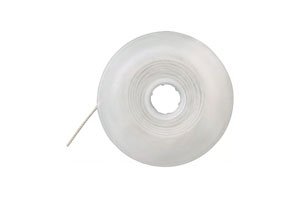







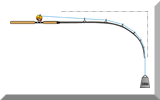



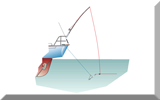





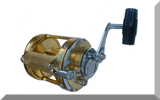


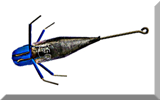



New! Comments
Have your say about what you've just read! Leave me a comment in the box below.